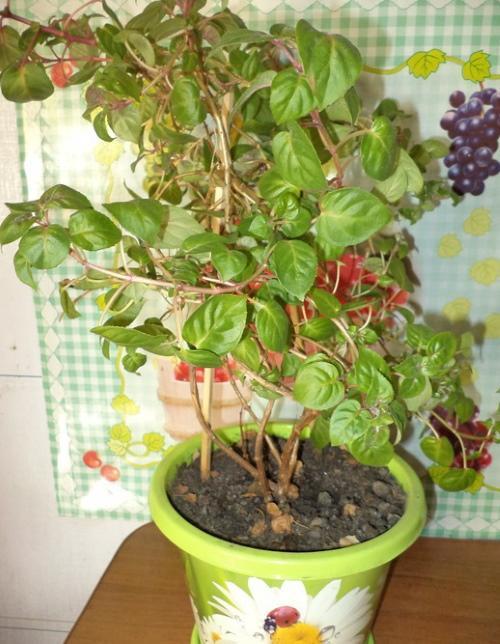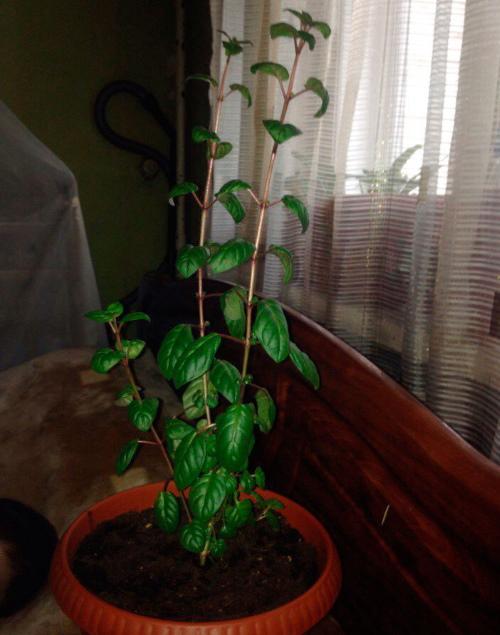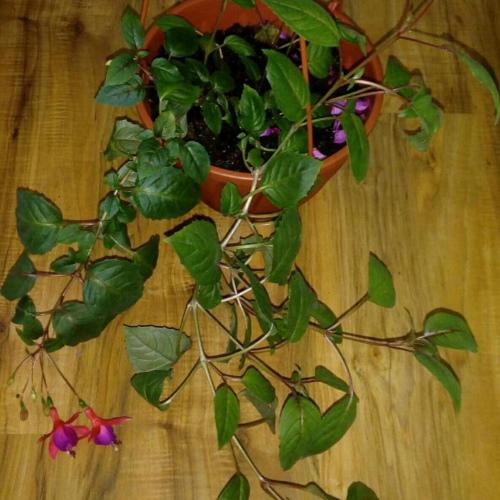Why fuchsia does not bloom - we find out the cause of the problem
 The main advantage and decoration of fuchsia is its unusual inflorescences, for which, in fact, the plant is grown. Therefore, it is quite possible to understand flower growers wondering why fuchsia does not bloom. And really, what could be wrong with a lush green bush? Here it grows, beautiful and green, growing new branches, but still no buds. Let's take a closer look at what circumstances affect the laying of flower buds.
The main advantage and decoration of fuchsia is its unusual inflorescences, for which, in fact, the plant is grown. Therefore, it is quite possible to understand flower growers wondering why fuchsia does not bloom. And really, what could be wrong with a lush green bush? Here it grows, beautiful and green, growing new branches, but still no buds. Let's take a closer look at what circumstances affect the laying of flower buds.
Why fuchsia does not bloom - possible causes of the problem

Unsuitable growing conditions delaying bud setting
 In general, fuchsia is a fairly “comfortable” culture and feels good in indoor conditions. However, it is worth considering some of the plant's maintenance requirements. So, in some cases, a green pet refuses to bloom if he doesn't like something, namely:
In general, fuchsia is a fairly “comfortable” culture and feels good in indoor conditions. However, it is worth considering some of the plant's maintenance requirements. So, in some cases, a green pet refuses to bloom if he doesn't like something, namely:
- The room is poorly lit. Fuchsia belongs to light-loving cultures and the northern windows are definitely not for her. At the same time, the lighting should be diffused.
- Too hot in the room, especially in winter. The maximum temperature that the bush can withstand is 25 -30 ° C in summer, otherwise it will drop the ovary and foliage. In winter, the plant should be kept cool (about 10 ° C). If the wintering is warm, the bush will not rest, and it is unlikely to bloom.
- Unsuitable soil. A light substrate dries quickly, while a heavy one, on the contrary, retains moisture for a long time. This prevents the appearance of thin roots, and it is with their help that moisture enters the aerial part. Fuchsia needs a substrate based on coconut fiber or containing vermicompost.
- Large pot. Until the root system fills the entire space of the flowerpot, the fuchsia will not bloom.
Some varieties do not bloom until long branches (at least 6 internodes) grow.
What care errors affect flowering
 In addition to good lighting, fuchsia has other requirements. If they are not followed, flowering will either not come at all, or it will be meager and inexpressive. This is possible for the following reasons:
In addition to good lighting, fuchsia has other requirements. If they are not followed, flowering will either not come at all, or it will be meager and inexpressive. This is possible for the following reasons:
- Improper watering. Both waterlogging and lack of moisture will not be beneficial. In the first case, the roots may rot, in the second, leaf fall will begin and the bush will begin to dry out. But the flower is very fond of spraying.
- Nutritional deficiency or excess nutrients in the soil. Fuchsia needs to be fed regularly from spring and all summer. Well stimulates the laying of flower buds phosphorus - potassium fertilizer. But you should not use it more than 1 time a week. An overfed plant will age faster and the flowering time will be shortened.
- Late pruning. The first time the bush is cut off before it is sent for the winter, shortening the shoots by more than half.It is advisable to carry out the spring procedure before the end of March, until active growth begins.
I was presented with fuchsia than sprinkled like sand, I did not find anyone below the leaves. A huge number of buds and flowers, but I was worried about what was on the leaves. I began to process it with phytoverm and overdid it. in vain covered with a bag. After that, the buds began to crumble and do not open. Can you tell me how to fix it? Maybe sprinkle with epin? There are still many buds, but they are somehow lifeless.
I wonder, after all, where was this "sand", right on top of the leaves, or on the back? If from above, then it is very similar to powdery mildew, Topaz helps well from it. If under the leaf, then this is how downy mildew manifests itself. It is almost impossible to get rid of it. I haven't tried it myself, I don't have fuchsias, but I read that these diseased leaves are being cut off. If the defeat has not spread further, then it helps.
And Fitoverm is from pests, and if you did not find them, then the treatment was in vain, it only burned the plant. Try spraying the bush with Epin. The buds that have sagged will no longer save, but at least the fuchsia itself will remain alive. Plus, the soil can be changed, it may also be a problem, besides, the insecticide got there exactly, once the package was covered.